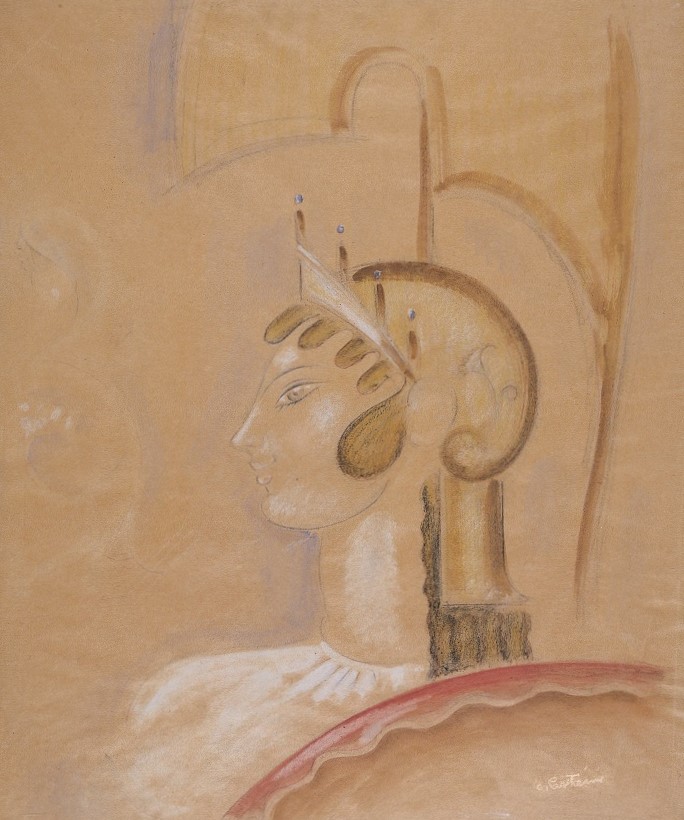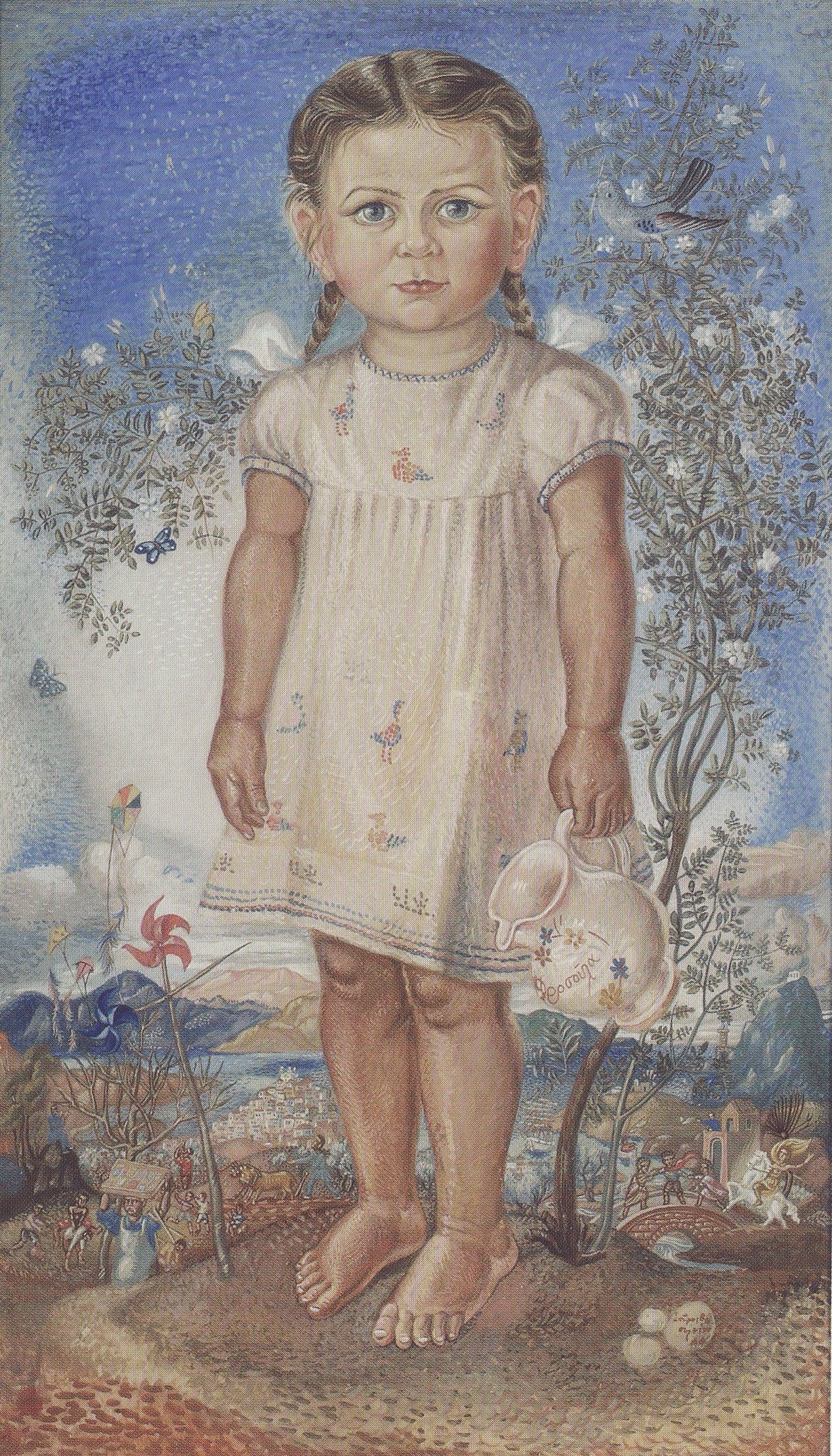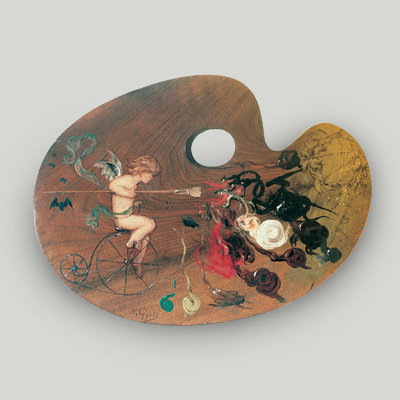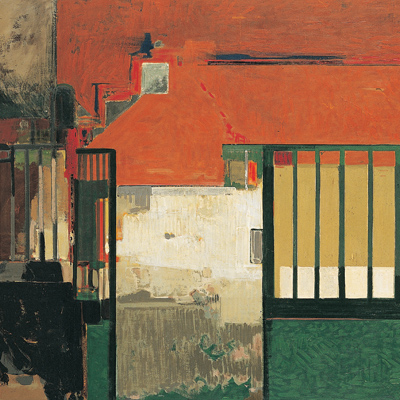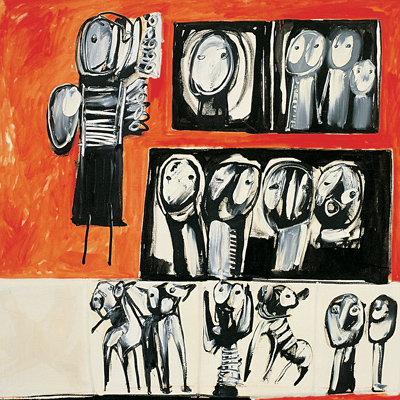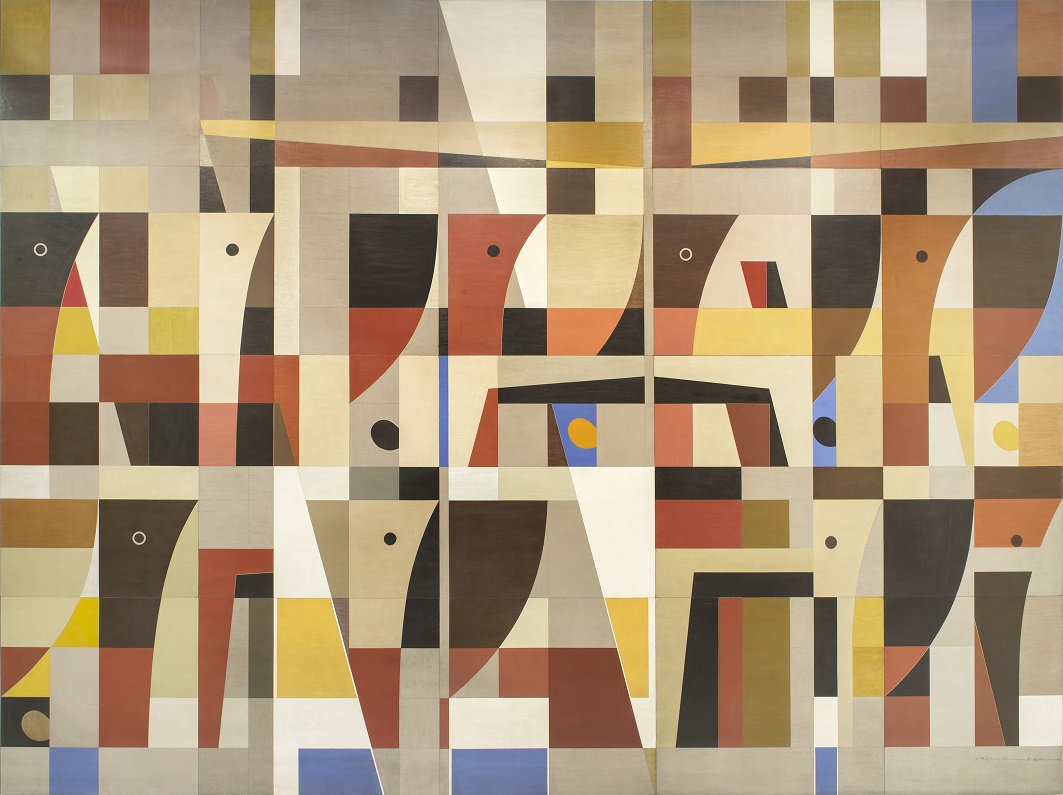Spyros Papaloukas, Arsanas of Pantokratoros Monastery
The Arsanas of Pantokratoros Monastery by Spyros Papaloukas belongs to a group of paintings with themes revolving around the Monastic community of Mount Athos. The painter remarkably combines Impressionism with the spirituality of Byzantine art. Papaloukas had a significant impact on modern-Greek painting. He demonstrated that modern art and Greekness are not mutually exclusive.
A unique relationship
The Arsanas of Pantokratoros Monastery belongs to a group of paintings by Spyros Papaloukas, with themes revolving around the Monastic community of Mount Athos (Agion Oros).
Papaloukas stayed at Mount Athos from November 1923 to November 1924. He formed a unique relationship with the peninsula.
The monasteries and the scenery of Mount Athos emanated peace and calm. They projected the need for deeper communication with the divine. This deeper, semantic dimension of the landscape intrigued the painter, who developed an experiential relationship with nature.
The composition of the painting
Dating back to 1924, the Arsanas of Pantokratoros Monastery is one of the first representations of the subject. This is why it is different from later representations.
The painting shows the arsanas or tarsanas of Pantokratoros Monastery. It is the small shipyard, where the monks kept the boats they used for fishing. The arsanas is also the only point of access to the Monastery by sea.
The main elements of the painting are the small buildings, the boats of the monks and the water reflecting the brilliant light in the sunbathed scenery. At the top, the composition is surrounded by the green hues of a forest.
It is composition on a vertical axis, with clear and bright tones, and a filtered light that is uniformly diffused on the painting’s surface. Details are omitted, emphasising a feeling of evanescence and fleeting impressions.
Byzantine art meets Impressionism
The most remarkable element of the composition is Papaloukas’ ability to successfully combine Impressionism with the spirituality of Byzantine art.
In later paintings related to Mount Athos, his style became more expressionistic. He used a bolder colour scale and stronger tonal contrasts, without grading.
His life in a nutshell
Spyros Papaloukas (1892-1957) was born in Desfina, Parnassida. He studied Painting at the Athens School of Fine Arts under Spyridon Vikatos, Dimitrios Geraniotis and Georgios Roilos. He continued his studies at the Académie Julian and Académie de la Grande Chaumière in Paris.
In 1921 he took part in the Greco-Turkish War of 1919–1922 as a war painter. In 1956 he was appointed professor at the Athens School of Fine Arts.
Artistic influences
Papaloukas created his own personal and genuinely authentic style. His work reflects a permeating sensitivity and is marked by his experiential relationship with nature.
In 1923-1924 he stayed at the monasteries of Mount Athos, where he studied nature and Byzantine art. He was able to incorporate them in his paintings, combining them with the post-Impressionism trends of Gaugin, Les Nabis and the Pointillists.
Papaloukas used various styles for his portraits. In his icon paintings, he attempted to combine traditional Byzantine forms with elements of contemporary art movements.
Favourite themes
Papaloukas worked with portraits and still life. His themes were determined quite early by:
- His interest in Byzantine history.
- His need to communicate with nature.
The painter’s influence
Papaloukas had a major influence on modern-Greek art and later Greek painters. Through his work, he demonstrated that modern art and Greekness are not mutually exclusive.
For this reason, he is considered a precursor of the Generation of the 30s. The Generation of the 30s includes important painters, such as Photis Kontoglou and Yannis Tsarouchis, who combined modern movements with Hellenic elements.
A recognised artist
Papaloukas took part in exhibitions of the Greek Artists Association, of which he was a member. He also participated in group exhibitions in Greece and abroad.
In 1976 his work was presented in a retrospective exhibition at the National Gallery and in 1982 at the City of Athens Cultural Centre.
Pantokratoros Monastery
The monastery is built by the sea, on the southeast side of the Mount Athos peninsula. It is devoted to the Metamorphosis (Transfiguration) of the Saviour.
The main building of the Monastery (Katholikon) is of the athonite type. The building is adorned with murals from the 14th century, which understandably attracted and inspired Papaloukas.
The work of art in our publications
The Arsanas of Pantokratoros Monastery by Spyros Papaloukas is referenced in the Alpha Bank publications:
- The Alpha Bank Collection. Paintings – Prints – Sculptures, edited by Irene Orati. The publication marks the 125th anniversary of Alpha Bank.
Buy the publication The Alpha Bank Collection. Paintings – Prints – Sculpture (only available in Greek) on the Alpha Bank e-shop. - The Alpha Bank Collection. Greek Art from 1920 until Today, edited by Irene Orati. The publication accompanied the Art Collection’s exhibition at the Macedonian Museum of Contemporary Art in Thessaloniki.
Buy the publication The Alpha Bank Collection. Greek Art from 1920 until Today on the Alpha Bank e-shop.
In other literature
The Arsanas of Pantokratoros Monastery by Spyros Papaloukas is referenced in the book Spyros Papaloukas. Stay in Athos by Markos Kampanis (in Greek).
The Alpha Bank Art Collection is not open to the public.
Research visits to the Art Collection can be organised upon request.
Contact us to book your visit.

